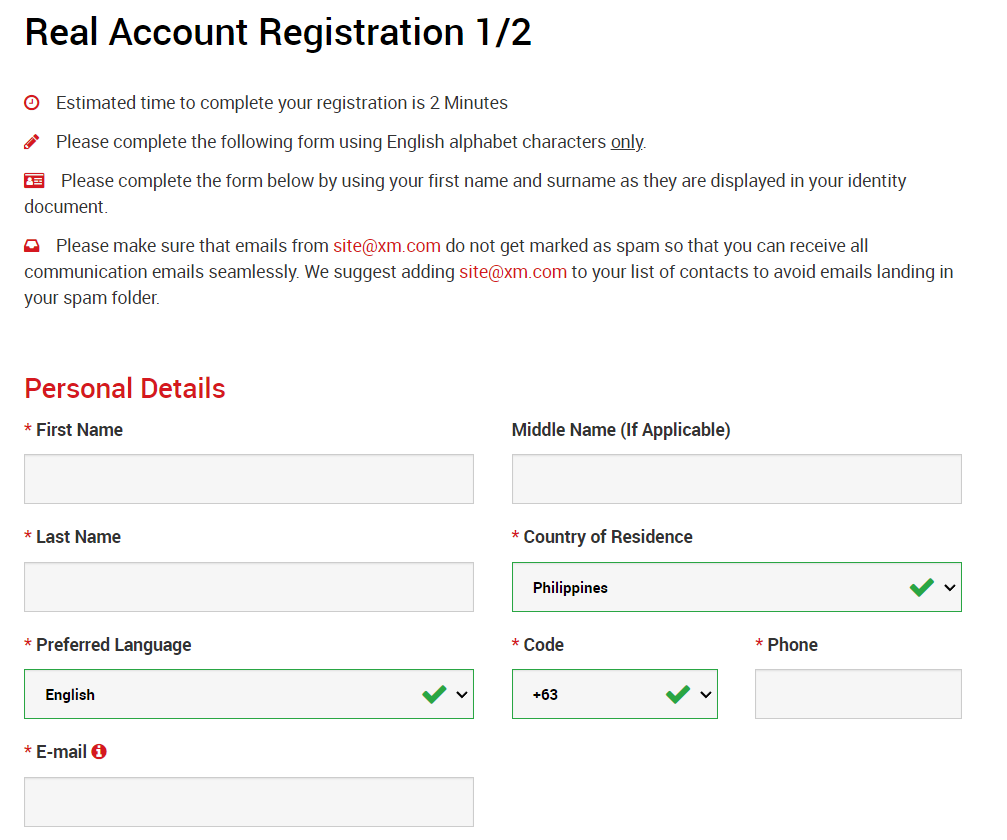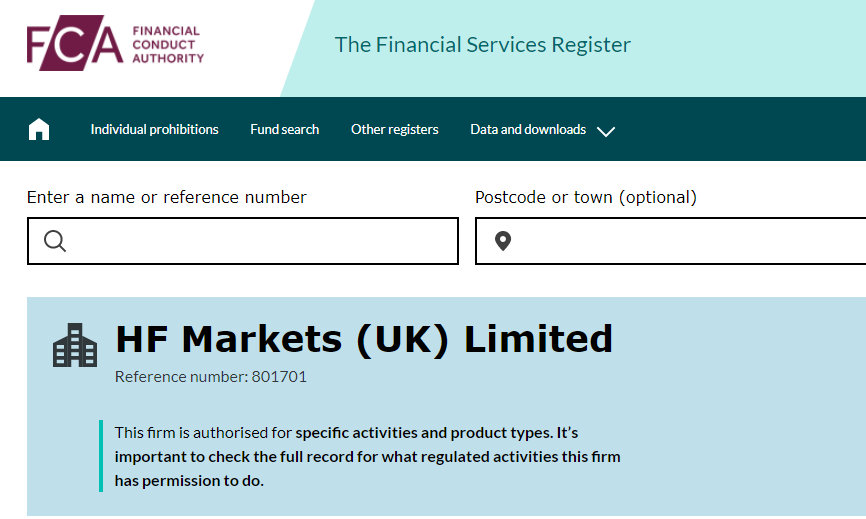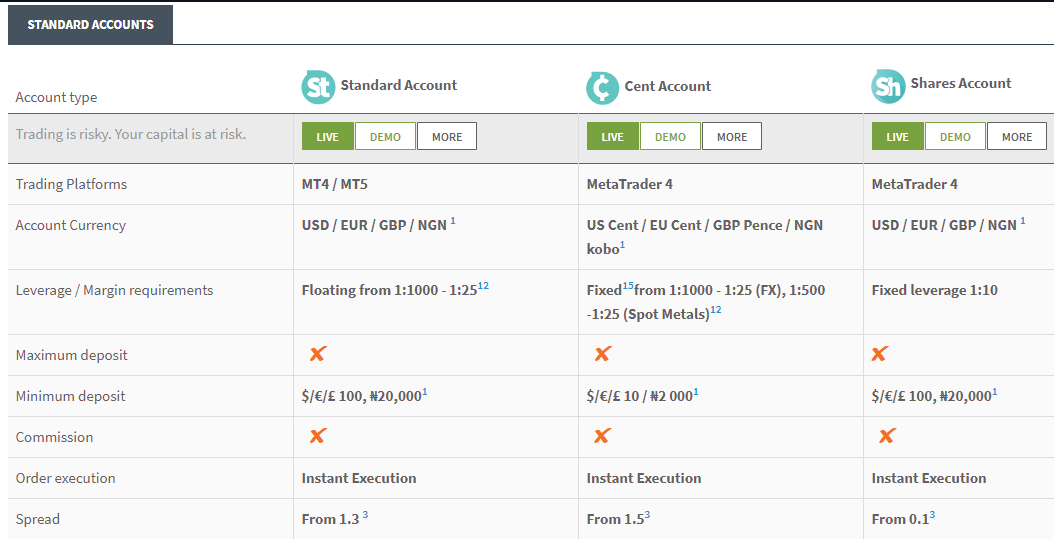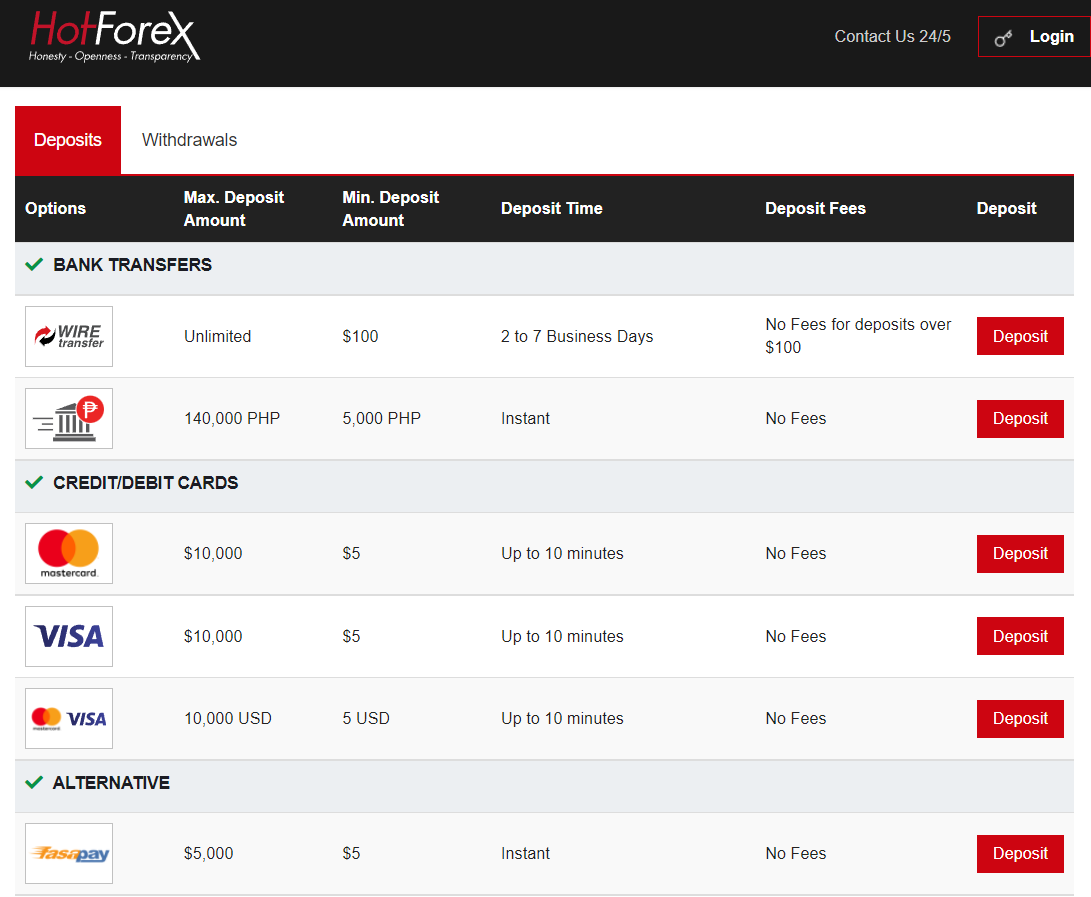Forex Trading Philippines
Forex Trading is not regulated in the Philippines. All the forex brokers that accept clients from the Philippines are foreign brokers. So, for the safety of your funds, it is really important to understand the risks involved & only trade via regulated & Tier-1 regulated forex brokers.
You can trade forex via forex brokers that are licensed with multiple Top-tier regulators
6 Steps to Start Forex Trading in Philippines
Summary Table of Best Forex Brokers for Beginner traders in Philippines in 2022
| Broker Name | Highlights | Trading Fees (Benchmark EUR/USD Standard Accounts) | Account Minimum | Max. Leverage | Learn More |
|---|---|---|---|---|---|
|
HotForex is a well regulated forex broker licensed with FCA, FSCA & CySEC. |
Commissions
Minimum spread of 0.1 pips
with Zero Account (plus $7 commission per lot) |
Account Minimum
$5
|
Max. Leverage
1:1000 for forex
|
Open Account
on HotForex |
Forex trading is like a global market where people trade different currencies. Imagine you have two kinds of money, let’s say dollars and euros. You want to exchange some of your dollars for euros because you think the euro might become more valuable.
So, you go to this big market, and you find someone who wants to trade their euros for your dollars. You agree on a price, make the trade, and now you have euros instead of dollars. If the euro’s value goes up, you can exchange it back for more dollars and make a profit.
But it’s a bit like a game because the values of currencies keep changing all the time. So, you need to be careful and think about when to trade to make money. Forex trading is like playing with money from different countries and trying to win by trading them at the right time.
Forex trading, also known as currency trading, refers to the trading of global currencies. Currencies are traded in pairs, forex traders buy one currency and sell another. Forex trading is done for a variety of reasons such as hedging against currency risk, maintaining forex reserves, and speculating on the price movements for profit.
Forex trading has been gaining in popularity in the Philippines over the last decade. Retail investors are turning towards online forex trading in greater numbers due to high liquidity and high leverage in the forex trading market.
Is Forex Trading Legal in the Philippines?
Currently, forex trading is not regulated in the Philippines. The Securities and Exchange Commission (SEC) of the Philippines has declared foreign exchange trading illegal in the Philippines. Retail traders in the Philippines are advised not to trade currency pairs in any manner until forex trading gets regulated. However, international forex brokers still accept clients from the Philippines.
All brokers offering forex CFD trading services to retail clients in the Philippines are doing so illegally. Those who are still trading forex in the Philippines are doing it at their own risk. No authority in the Philippines can be held responsible in case of an unsettled dispute between broker and client.
If you still wish to trade forex in the Philippines, it is very important to choose the brokers that are regulated by tier 1 or tier 2 regulatory authorities. The clients residing in the Philippines are registered under offshore regulation but the top-tier regulatory license reduces the third party risk. The offshore regulation is not a license to offer forex trading services in the Philippines.
In this guide, we’ll talk about everything you need to know about forex trading in the Philippines.
Chapter #1
What is Forex Trading?
Here is a brief overview of forex trading.
Understanding the Forex Market and its Participants
The forex market is the largest financial market in the world. The forex market has an average daily turnover of more than $6.6 trillion according to a BIS report. This makes the forex trading market the most liquid market in the world. The size of the global forex market has only been increasing every year.
Similar to other financial markets, the exchange rate between different currencies depends on demand and supply, amongst other factors. The price of a currency moves upwards if there are more people buying the currency than those selling the currency.
The forex market is an example of a decentralized market. This means that there is no central control over the market. The decentralized nature of the market makes it possible for traders and investors to deal directly with each other rather than rely on a central exchange.
The global forex trading market is open at all hours during weekdays. It is closed during the weekends. This 24/5 system makes it convenient for traders from all around the world to trade with each other. However, the liquidity for particular currency pairs is different at different times of the day. In hours of low liquidity, the spreads can become wider. The forex market can be divided into four main time periods based on when markets in Australia, Europe, the US, and Japan open and close. This is because these geographies account for large trading volumes in the forex market.
People from different time zones interact and make the market run for 24 hours a day. However, the forex market can be divided into four main time zones. These different time zones correspond with the Australian market, the United States market, the European market, and the Japanese market.
There are several participants that contribute to the forex market in different ways. Some of the most major players in the market include the banks (both central and commercial), worldwide governments, large multinational companies, retail investors and traders, investment management firms, brokers and dealers, money-transfer and money-exchange companies, and so on.
For example, as a retail trader, you can use a bank to convert your currency from PHP to USD. There can be different purposes for making the exchange including travel and business needs.
How Are Currencies Traded and the Various Forex Instruments
Forex is traded in pairs. For example, a currency pair is PHP/USD. This currency pair allows you to buy or sell PHP in exchange for USD. There are numerous currency pairs operating in the global forex market.
However, forex traders should know that the USD is the most traded currency in the world. Most of the popular currency pairs in the world involve the USD. For example, EUR/USD is the largest traded currency pair.
Currency pairs can be traded through a variety of financial instruments. A financial instrument denotes the type of contract through which you are making the trade. Different financial instruments include spot forex contracts, forward contracts, contracts for difference, and so on.
We have briefly covered each financial instrument here:
Spot forex contract – A spot forex contract is the most widely used instrument for forex trading. This is the traditional way in which forex trading is and was done. A spot forex contract allows currencies to be exchanged immediately. The delivery and settlement of the contract are done instantly.
Futures forex contract – This is a more complicated derivative contract. A futures forex contract allows you to deliver and settle your trade at a later date. The prices are agreed upon beforehand. A futures forex contract allows you to take advantage of future price movements in the present.
Currency swaps – A currency swap allows traders to exchange their loan denominated in one currency for a loan denominated in another currency. This is why it is called a “swap”. A swap allows you to repay the principal amount and interest amount in a different currency. Any one of the two parties involved in a currency swap will earn profits.
Currency Forward – A forward contract allows you to exchange one currency for another at a future date, however, the exchange rate is determined at the present. This allows for future exchanges while negating the effect of price movements in the forex market. This type of contract is most often used for international trades.
Options forex contracts – An option contract provides the buyer with the right, but not the obligation, to exchange currency at a later date at a predetermined exchange right. The buyer does not have to exchange the currency on the future date, but they can. For this right, the seller is paid a premium at the time of making the contract.
Non-deliverable forward (NDF) – A non-deliverable forward allows a buyer and a seller to settle a currency exchange without actually exchanging any currency. This is why the term “non-deliverable” is used. A Non-deliverable forward is the same as a forward contract, with the exception that the actual currency is never exchanged.
CFDs – A CFD, also known as a contract-for-difference, allows forex traders to trade on price movements of the currency. Under this type of contract, only the price difference between the opening and the closing of the contract needs to be paid. There is no physical exchange of one currency in return for another.
What is Online Forex Trading and How Does it Work?
Online forex trading allows retail traders (also known as individual traders) to trade currencies and profit from price movements in the currency market. These brokers offer trading on forex pairs as a CFD. Online forex trading is gaining in popularity around the world since it provides traders with access to a highly liquid and volatile market.
Forex traders can trade online by taking advantage of the high leverage provided by global online forex brokers. Online forex trading can be done through a variety of financial instruments (as detailed above) but the most commonly used instrument is CFD. CFDs allow traders to only pay the difference in price and the actual currency does not need to be exchanged.
Online forex trading via CFDs is the least complicated. The easy availability of leverage makes it much more lucrative. You only need to make a small minimum deposit into an online brokerage account in order to get started. You can trade using margins, which means that your deposited amount only needs to cover the difference between the trades. High leverage can assist in booking bigger profits with smaller deposits. However, leverage also increases the risk factor as clients can lose the whole amount kept in the trading account.
Online CFD trading is done through trading platforms like MetaTrader 4. These trading platforms offer an easy way to keep track of price movements of different currencies and to execute trades. Online forex brokers offer a trading platform for free to their users.
There are several online forex brokers in the world these days. Over the last decade, the popularity of online forex trading has grown exponentially. The demand for forex brokers is increasing due to the ease of accessibility in CFD trading.
For example, a Filipino trader just needs to open an account with a reputable forex broker such as HotForex or FXTM. To open an account, they need to complete certain KYC formalities and provide a deposit amount. Once the account is registered, the trader can download the trading platform and start trading.
Chapter #2
Basic Forex Terminology
There are certain basic terms that a forex trader needs to understand.
Currency pair: A currency pair denotes the two currencies you will be trading. One currency will be bought and the other currency will be exchanged. For example, PHP/USD is a currency pair that denotes the Philippine Peso and the American Dollar.
When trading the PHP/USD you will be buying or selling the PHP in exchange for the USD. All forex trading is done via currency pairs.
In this currency pair, the PHP is known as the base currency and the USD is known as the quote currency. The exchange rate of PHP/USD denotes how much of the quote currency you will need in order to trade one unit of the base currency.
There are three types of currency pairs – major, minor, and exotic.
You should always try to trade major currency pairs since these are more predictable, have tighter spreads, and have the highest volume. This is because major pairs are largely traded and are highly liquid.
Pips: A pip is the smallest movement that the price of a currency can have. For USD-related currency pairs, the value of a pip is $0.0001. The spread that you will be charged for trading a currency pair is denoted in pips.
Leverage: Leverage is a debt taken from liquidity provider to trade CFDs. A leverage ratio of 1:500 means that clients can open a position worth $500 with $1 in the account. The higher the leverage, the larger the trade that you can make with a given amount of money.
Leverage increases the potential profit you can make through your trades since you only need a fraction of the money to be able to enter a sizeable trade. However, this also increases the amount of risk that you face with your trades.
Bid Price: The bid price is the highest price that a buyer is willing to pay for one unit of the underlying asset. In forex, the bid price refers to the amount of quote currency needed to buy or sell one unit of the base currency.
Ask Price: The ask price is the lowest amount that a seller is willing to pay to sell a security. In forex, the ask price refers to the amount of quote currency that you will need to sell in order to get one unit of the base currency.
Spread: The spread is essentially a fee levied by a forex broker. It is denoted as the difference between the bid price and the ask price. The difference between the two is the fee that the broker or liquidity provider is charging in order to provide brokerage services.
The spread is usually variable in nature. This means that the spread fluctuates in accordance with the liquidity and the timing of the trade.
The spread for trading each currency pair will be different. Usually, major currency pairs have tighter spreads than minor currency pairs. This means that trading major currency pairs is more affordable than trading other types of currency pairs.
For example, the below screenshot shows the spread for EUR/USD at XM. Their spread with Micro Account is 1.9 pips on their MetaTrader platform.
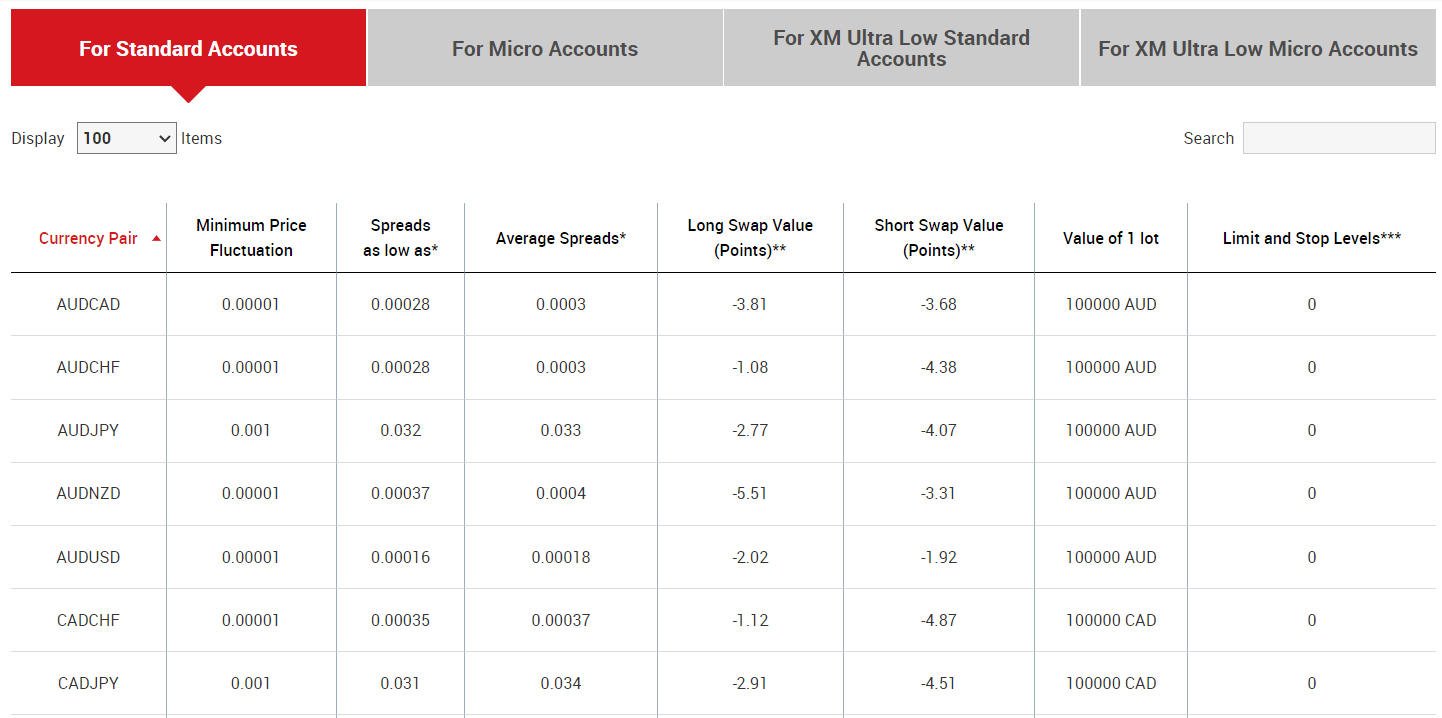
Lot sizes: Lot size is the amount of currency that you will be trading. There are three different main lot sizes in the forex market.
The three sizes are Standard, Mini, and Micro.
A Standard lot is equivalent to 100,000 units of the base currency.
A Mini lot is equivalent to 10,000 units of the base currency.
A Micro lot is equivalent to 1,000 units of the base currency.
Different brokers offer different types of lot sizes, however, the terminology for the three main types of lots largely remains the same.
Forex Trading Strategies
Trading without strategy is like sailing without a compass. The sailor has no idea about the wind speed or the direction. That’s why the practice of forex analysis plays a vital role in currency trading. You look at the changes in the values of currency pairs and the forces that are influencing those price movements.
Traders use both fundamental and technical analysis for creating a profitable strategy. Many expert traders combine both techniques to take a hybrid approach. In short, the knowledge of technical analysis will tell you when (to buy or sell) and fundamental analysis tells you why (the price movements). Both are indispensable weapons for a successful forex trader.
Let’s deconstruct both methods one by one.
Fundamental Analysis
What economic factors will impact the demand and supply of a currency? Welcome to Macroeconomics 101, the law of demand and supply. If the demand for a currency is increasing, the trader may assume the prices will rise. On the other hand, a demand reduction may be an indication of an eventual fall.
However, it’s not that simple! There are many factors such as economic health, political stability, global events, and others that influence the expansion and contraction of a particular currency. For instance, the US Sub-Prime Lending Crisis in 2008 caused a massive breakdown of financial systems worldwide.
The fundamental analysis generally involves the following economic indicators:
1. Economy:
In addition to global economic events, the localized changes in a national economy can also influence the currency prices of that country. For instance, the increased commodity prices globally can strengthen Australian dollars.
2. Political Changes:
Although government changes are not a frequent affair, currency prices can be affected during a transition period. Developed countries have relatively stable regimes in comparison to developing countries. Political instability is the main reason why the currencies of many African countries are so unpredictable.
3. Monetary and Fiscal Policy:
Central banks use monetary policy as an effective tool to control the demand and supply of a currency. They can reduce the interest rate in an economic slowdown and can increase to curb the inflation caused by economic growth. The fiscal policy entails taxation and government spending. Higher taxes can drive slower credit and economic development. Both government policies can have a significant impact on the national currency.
4. Activities of Major Participants:
Main participants such as banks, financial institutions, or hedge funds may buy or sell a specific currency to up or down the prices. You will be in much better positions if you have an idea about the main speculators of the forex market.
5. Economic data and reports:
Main participants such as banks, financial institutions, or hedge funds may buy or World governments publish statistical data and reports that reveal the economic health and performance over a period. Many financial reports like employment data, inflation rate, GDP, and foreign exchange reserve can indicate regional economic conditions, which can dramatically impact the local currency. A forex dealer can use an economic calendar to avoid unwanted surprises from the release of new data.
Technical Analysis
Charts and graphs are the primary tools of technical analysis. Charts help traders identify historical performance, ongoing trends, and price movements and calculate risk to maximize gains from currency trading.
Understanding different charting formats such as line, bar chart, and candlestick is essential to develop a solid trading strategy for beginners. The following are important terminologies associated with technical analysis.
1. Bar chart:
It is the most basic charting which helps users select a currency and its performance for a fixed period. The bar chart shows the highest and lowest currency price points and average performance over the period chosen.
2. Candlestick:
It also displays the same information: open, low, high, and close. However, the representation of data is very different from the bar chart. It becomes easier for users to see the highest and lowest peaks of the currency movements with thin vertical lines.
3. Price Trends:
Trend is a term used in technical analysis of capital markets that depicts the direction of the price. Generally, the price of the underlying instrument moves in a particular direction until a trend reversal is witnessed. The tops and bottoms of the charts can be analysed to identify the price trend at a given time.
Trendlines and trend reversal are very important components of technical analysis. A higher-high price action followed by a higher low represents an uptrend (bullish) while a lower low and lower high depict a downtrend in price movement.
4. Support and Resistance
Support and resistance are the prices at which the trends are likely to reverse or stop moving further in that direction. There can be multiple support and resistance levels for a single financial instrument.
Support is the lower limit at which the price trend is likely to reverse or stop moving further below. Resistance is the upper limit on the price trend. Whenever a resistance or support level is broken, the price moves significantly. These limits are created due to trend reversals and stagnancy of prices at the price that same particular level. A support or resistance level gets stronger every time it resists the price movement.
5. Moving Average
As the name suggests, the moving average is an important indicator that depicts the average price movement in a given time. A moving average indicator creates a series of averages of different subsets of the full data sets of prices in a particular time interval. Current prices below the moving average depict a buying opportunity while the prices above the moving average may benefit the sellers.
6. Fibonacci Retracement
Fibonacci retracement levels are based on the Fibonacci sequence and are used to identify potential support and resistance levels. Traders use these levels to determine potential price retracement areas during a trend.
7. Bollinger Bands
Bollinger Bands consist of a moving average (typically 20-day SMA) and two standard deviations above and below the moving average. They help traders identify periods of high or low volatility and potential price breakouts.
8. Candlestick Patterns
Candlestick charts display price data in a visual format using candlestick patterns. Traders analyze patterns such as doji, engulfing patterns, and hammers to identify potential trend reversals or continuation.
9. Volume Analysis
Volume analysis examines trading volume accompanying price movements. It helps traders understand the strength or weakness of a price trend and identify potential reversals or breakouts.
10. Chart Patterns
Chart patterns, such as head and shoulders, double tops, and triangles, are formed by price movements and can indicate potential trend reversals or continuations.
There are hundreds of strategies that are used in the technical analysis of financial instruments. Technical analysis works well on instruments with high liquidity like the forex market.
Experienced traders often use technical analysis in combination with fundamental analysis to understand why the value of a currency rises or falls for the selected period. For example, if the fundamentals indicate that the US Dollar will strengthen against the Euro due to policy divergence, and the technical analysis also indicates the same, then it is much more likely that your strategy may be successful as compared to incomplete research.
You can use simple mathematical tools such as moving averages, trend lines, and others for technical analysis. You can learn about more advanced concepts like Elliott Wave Theory, Fibonacci Studies, and Pivot Points as you progress.
Chapter #3
How Can You Trade Forex in Philippines?
Currency pairs can be traded online as CFDs or other derivative instruments. There are several brokers and banks that offer forex trading services. Such services can be either by acting as a market maker or by straight-through processing (STP). This depends on the business model of the forex broker or bank.
Most forex brokers online offer CFDs for forex trading.


